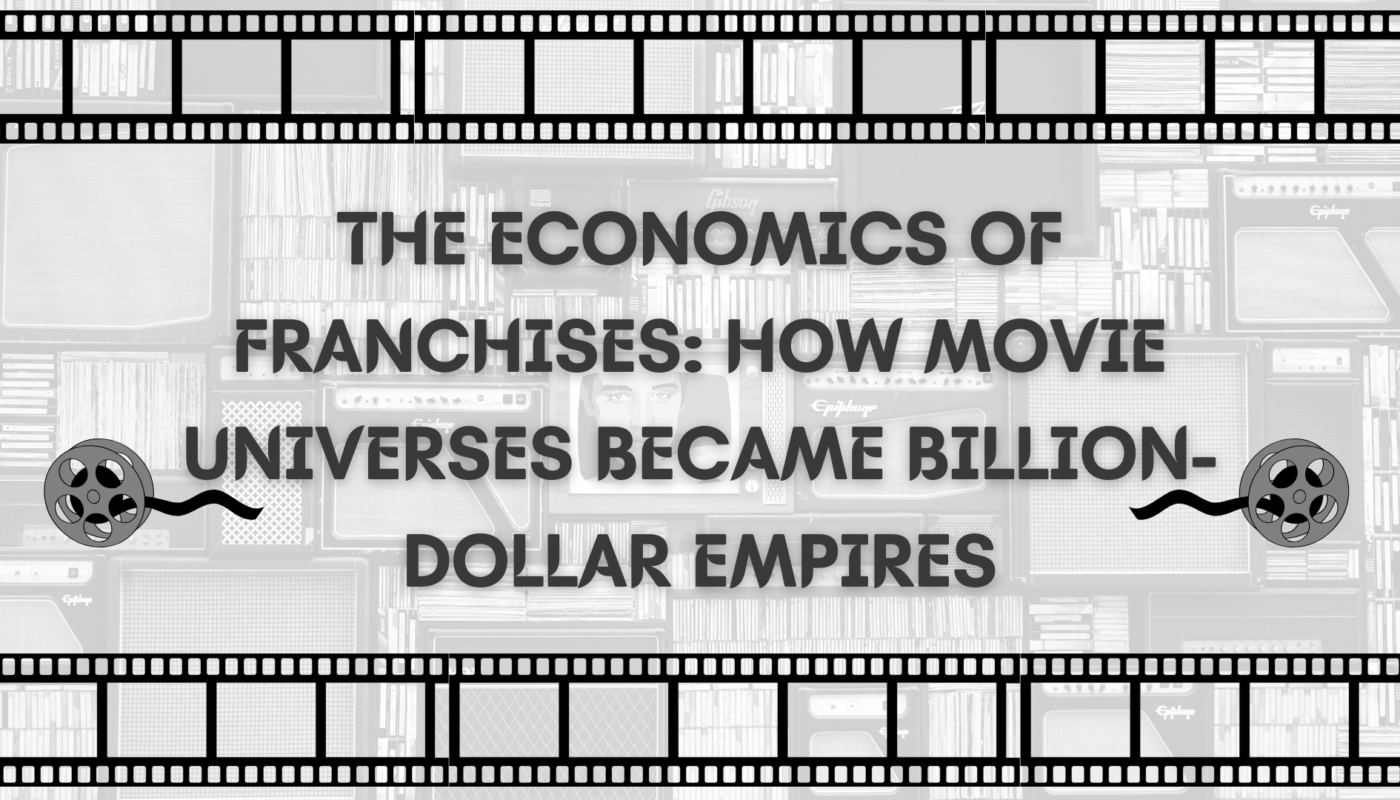In the modern entertainment industry, cinematic universes have become more than storytelling platforms—they are sophisticated economic machines. Franchises like the Marvel Cinematic Universe (MCU), Star Wars, and Fast & Furious have transformed from singular film successes into expansive, multi-billion-dollar ecosystems. The era of standalone blockbusters is fading, replaced by serialized storytelling and massive branding operations designed for long-term profitability.
So how do these movie franchises make their billions? From merchandising and streaming deals to global market strategies and theme parks, the answer lies in a deeply interconnected business model. This deep dive into the economics of film franchises reveals how intellectual property (IP) became Hollywood’s most valuable asset.

Box Office Gold: The Starting Point of Franchise Wealth
At the heart of every successful movie universe is a commanding presence at the global box office. These initial theatrical earnings set the stage for broader monetization.
-
Avengers: Endgame grossed over $2.7 billion globally.
-
Star Wars: The Force Awakens brought in $2 billion.
-
Furious 7 earned $1.5 billion, cementing its global appeal.
While these box office figures are staggering, they represent just one layer of a much larger revenue model.
Merchandising: The Real Franchise Fortune
Merchandise is where franchises print money. Toys, apparel, collectibles, and licensed products turn fan devotion into continuous revenue.
-
Star Wars has generated over $40 billion in merchandise sales since 1977.
-
Marvel pulls in billions annually from character licensing, including toys, apparel, and consumer goods.
-
Harry Potter continues to profit from everything from LEGO sets to house-themed school supplies.
Merchandising often surpasses box office profits, especially as franchises leverage nostalgia and multi-generational fan bases.
The Franchise Formula: Serialized Storytelling & World-Building
Successful movie franchises are rooted in immersive world-building and ongoing narratives. This formula is designed to build loyalty and ensure return viewers:
-
Recurring characters audiences love
-
Interconnected stories across sequels, spin-offs, and prequels
-
Clear, consistent branding and tone
-
Serialized releases that maintain buzz and anticipation
The MCU’s phased storytelling and character crossovers exemplify this model, keeping fans invested over a decade of releases.
Streaming Platforms: Franchise Powerhouses
Streaming has become essential to the modern franchise economy. It extends a franchise’s lifespan and increases its visibility:
-
Disney+ uses original Marvel and Star Wars shows like WandaVision and The Mandalorian to drive subscriptions.
-
HBO Max leans on DC Universe properties for recurring viewership.
-
Amazon Prime Video invested over $1 billion in The Rings of Power, aiming to anchor its fantasy franchise ambitions.
Streaming creates an always-on presence, allowing franchises to remain culturally relevant between theatrical releases.
Vertical Integration: Studio Control and Synergy
Studios that own their franchises outright can maximize profits through vertical integration:
-
Disney owns Marvel, Star Wars, and Pixar, enabling cross-promotion across TV, film, merchandise, and theme parks.
-
Attractions like Avengers Campus and Galaxy’s Edge bring fictional worlds to life while boosting park revenue.
-
Universal Studios uses its Fast & Furious and Jurassic World franchises similarly for synergistic gains.
Vertical integration allows for brand consistency, reduced licensing costs, and optimized marketing campaigns across platforms.
Global Appeal: Designing for the Worldwide Audience
Franchises today are built for international success. Visual storytelling, minimal dialogue, and global casting help attract non-English-speaking audiences.
-
The Fast & Furious saga excels at casting globally recognized stars and creating action sequences that transcend language.
-
Franchises often feature international locations, release schedules tailored for foreign markets, and culturally inclusive storytelling.
Studios now consider global performance just as crucial—if not more so—than domestic box office results.
Beyond the Screen: Cross-Platform Revenue Streams
Movie universes expand far beyond cinema:
-
Video Games: Titles like Spider-Man (PS5), Star Wars Jedi: Survivor, and Hogwarts Legacy generate billions.
-
Theme Parks: Rides and lands themed around franchises create year-round revenue.
-
Comics, Novels, and Apps: Expand lore and deepen fan engagement.
-
NFTs and Metaverse Projects: Emerging frontiers in monetization and fan interactivity.
Each new medium becomes another entry point for fans—and another income stream for studios.
Risk Aversion: Why Studios Prefer Franchises Over Original IP
Creating original content is financially risky. Franchises offer:
-
Built-in audiences
-
Lower marketing costs due to brand familiarity
-
Reliable merchandise and licensing potential
-
More predictable box office returns
With shareholders and investors favoring low-risk, high-reward ventures, studios increasingly focus on extending proven IPs rather than experimenting with new concepts.
The Backlash: Franchise Fatigue and Creative Stagnation
While profitable, the franchise model has drawbacks:
-
Creative burnout among filmmakers and audiences
-
Oversaturation with sequels, prequels, and spin-offs
-
Fewer opportunities for original, standalone stories
Studios are beginning to address this with more diverse casting, new storytelling tones, and genre hybrids—such as the darker, R-rated Deadpool or the more introspective Andor series.
The Future: What’s Next for Movie Universes?
Franchises are evolving to stay ahead of audience demands and technological changes:
-
AI and Virtual Production: Lower costs and streamline workflows
-
Metaverse Integration: Immersive storytelling through VR/AR experiences
-
Fan-Created Content: Decentralized platforms could allow fans to co-author narratives
As the lines blur between video games, movies, and live experiences, franchises will likely become even more interactive and immersive.
Conclusion: Franchises Are Hollywood’s New Business Model
The Marvel, Star Wars, and Fast & Furious franchises are not just cultural phenomena—they are economic ecosystems. From merchandise and streaming to global appeal and vertical integration, these franchises represent the future of entertainment. They offer predictable profits, scalable storytelling, and unparalleled brand loyalty.
In a competitive media landscape, franchises are the ultimate safe bet—and their economic power shows no sign of slowing down.
If you liked this article, check out: Superhero Franchises Global Takeover
also checkout: Click Here



